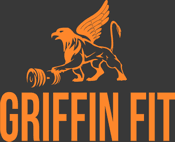How to stretch for better flexibility
by Michael Davis in Education | Training | Uncategorised

As activity levels decline, our muscles naturally become tighter and weaker. Our lifestyles have gradually become more sedentary, we sit more and move less creating an array of problems for our physical health. Stretching is a wonderful tool that can be used to improve the quality of your life. Even a small amount of stretching is beneficial. Whether it be before bed or first thing in the morning, the key is to develop a routine.
Why should you stretch?
Stretching has many benefits. It relaxes your mind and puts you in tune with your body. Everyone can learn to stretch, regardless of your age or flexibility. Here are some of the benefits:
- Increases range of motion
- Reduce risk of injury
- Relaxes the mind. General feel good sensation
- Prevents the age related decline in flexibility
How to stretch for flexibility: The Anderson method
Introduced by Bob Anderson, the Anderson method of stretching uses static stretches and consists of two distinct phases: The Easy stretch and the Developmental stretch.
Static stretches are one of the best methods used to improve flexibility. Static stretches involve holding the stretched position for a period of time; there is no bouncing involved, only slight movement as you relax into the stretch. The two phases of the Anderson method are:
- The Easy stretch ( First 10 – 15 seconds). Keeping the intensity very light and going to the point where you feel mild tension. This pre-stretch reduces the activity of nervous reflexes that oppose the stretch.
- The Developmental stretch (30 – 60 seconds). Once you have performed the easy stretch, shift directly to the main stretch by gradually moving into the stretch.
How to design your own stretching routine
Your routine should be tailored to your needs and the time you have available.
First, determine the areas where you want to gain more flexibility. It’s ok if you would like to start with just one muscle and gradually add more to your routine over time. Write them down, adding to your list as you desire. Here is a video example of a hamstring stretch. More stretch tutorials available on demand with a griffin fit membership.
Second, determine the duration and frequency for each stretch. The optimal duration of a stretch is 30 – 60 seconds (Development stretch only). In terms of flexibility, there is no benefit to stretching a muscle more that 60s at a time. You want to aim for 9 -10 minutes total per week per muscle spread throughout the week, this is the optimal time for maximal benefit. How long you should hold a stretch for depends on how many times you are going to stretch per week. If you have limited time, you may only be able to fit in 3 sessions per week. 6 sessions per week if you have more time. Here are some examples you can follow:
- If you are able to fit in 6 sessions per week:
-
- 3 sets (per muscle)
- 10s easy stretch + 30s developmental stretch
- 6 times per week
- 9 mins total/ week/ muscle
- If you can only fit in 3 sessions per week:
-
- 3 sets (per muscle)
- 10s easy stretch + 60s developmental stretch
- 3 times per week
- 9 mins total/ week/ muscle
Rest at least one minute between sets. You can use the rest time to stretch the other side.
Third, plan when and where you are going to stretch. Buy any equipment you need such as a soft mat. It’s important that you plan everything, not only will this encourage you to stretch, it will help you make a habit out of it.
Warming up
It’s not recommended to stretch cold muscles. Ideally, you want to warm up before you start stretching. You can do light cardio for 5-10 minutes before, or you can use your stretch as an add-on to the end of your workout.
Intensity
Keep the intensity low to moderate. There is no need to stretch to the point where you feel pain or discomfort. As you are stretching, you should feel yourself gradually easing into the stretch as your muscles relax. If this is not the case then you are probably stretching too hard and you should ease out of the stretch a little.
What if I can’t fit in 3 sessions per week?
Any amount of stretching is beneficial for flexibility. Even if you can only fit in 1 session per week, that is absolutely fine. 10 minutes of stretching per muscle per week is just the optimal amount of time from which you will make the most progress.
Example of a stretch
Let’s say you want to work on hamstring flexibility. You have determined you are going to stretch 3 times a week.
- Start by doing a light warm up (5 – 10 mins)
- Begin with an easy stretch for 10s followed by your main developmental stretch for 60s.
- Use the rest time on one leg to stretch the other side
- Alternate, repeating 3 times on each side
- Repeat this stretch 3 times a week to develop your routine.
